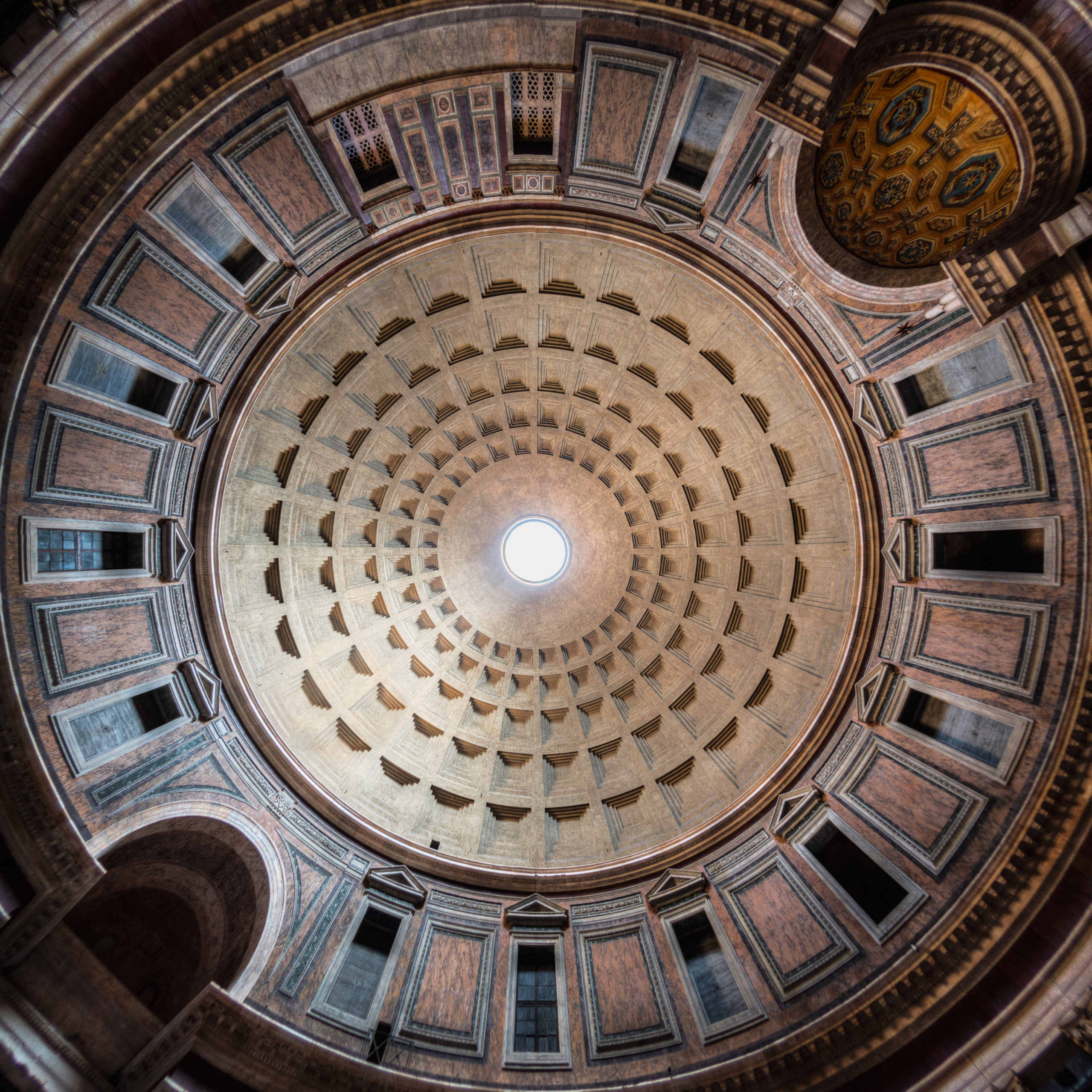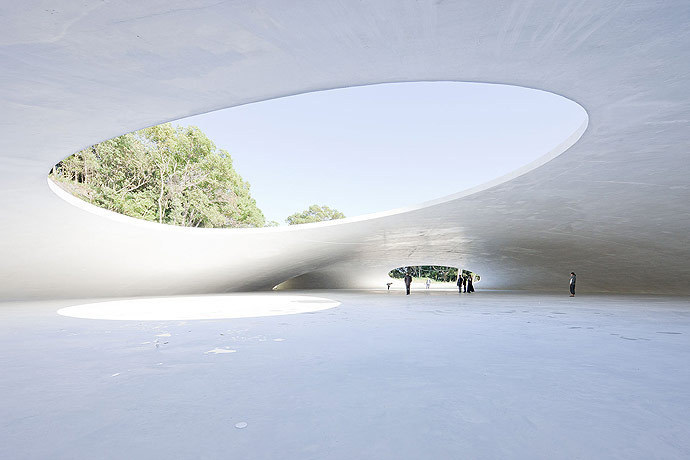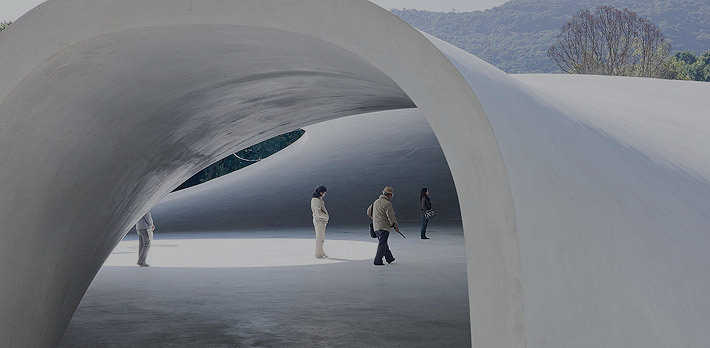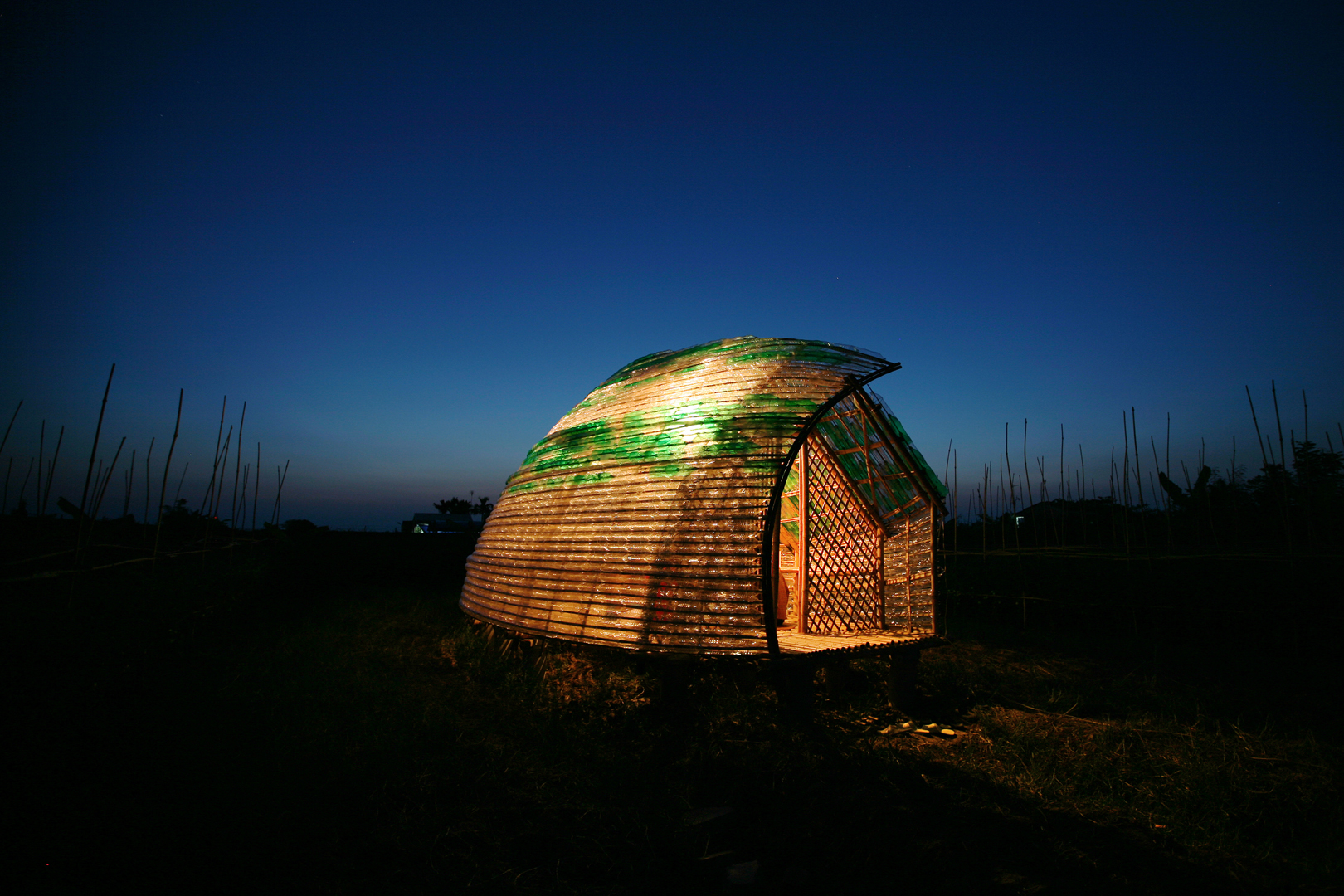Architizer's new image-heavy daily newsletter, The Plug, is easy on the eyes, giving readers a quick jolt of inspiration to supercharge their days. Plug in to the latest design discussions by subscribing.
Concrete played the main role in the modernist era and its dominance continues today as a cost-efficient, strong and widely accessible building material. With the innovations of formworks, reinforcement and improved concrete batch recipe, cast concrete is more versatile than just flat slabs and walls. It is the dominant building material, especially for large-scale residential and commercial projects, and it continues to be the first choice for making free-form buildings that overturn formal expectations.

The cast concrete dome of the Pantheon, image by Mohammad Reza Domiri Ganji, CC BY-SA 4.0.
Before the Contemporary
The technique of in-situ casting has long been applied on large scale since ancient Rome (or even earlier). The most famous concrete structure from that time might be the Pantheon built by the Romans, which features a semi-sphere dome made of cast concrete, with a hulking 142 foot (43.5 meter) diameter. It remains the largest non-reinforced concrete structure today.
Although the Pantheon proves the potential of non-reinforced concrete, it also represented a significantly intensive investment in labor, money and time. This was, in large part, due to the brittleness of the material. The industrial revolution in the 19th century allowed the steel industry to flourish, which, in turn, lead to the material’s application as a concrete reinforcement. By casting steel ribs into the concrete structure, the naturally brittle concrete can be shaped into more organic and irregular forms than domes, with more structural stability. This innovation also allows skyscrapers to grow taller and taller.

Teshima Art Museum by Ryue Nishizawa, Takamatsu, Japan
Blooming Forms
Entering the 21st century, computerized tools further facilitate the design and realization of free-form architecture. For example, Teshima Art Museum by Nishizawa is famous for the 9.8 inch (25cm) thin, seamless concrete shell structure that covers an area of 40×60 meters with only 4 meters at its highest point. Walls are no longer vertical and roofs are not simply flat, sloped or anything symmetrical. Following careful engineering calculations, the construction team used a 3D measurement system to keep the precision of the soil formwork and steel reinforcement to millimeters.
Besides, the evolving concrete recipe also makes the batch solidify faster to achieve precision in construction. Large scale free-form concrete structures are mostly cast-in-place for both cost-efficiency and structural stability. It is therefore important that the poured concrete solidify and dry in time to minimize possible impacts from environmental factors such as temperature, humidity and precipitation.
Appraising The Cost
Free-form casting boosts the diversity of modern architecture but the cost incurred is massive. This includes the budget put into engineering and construction, as well as the energy consumed during the whole process. Free-form architecture is attractive for many reasons, one of the most prominent being the unconventional shapes that it takes on. To create these idiosyncratic volumes, the formworks have to be tailored specifically for the design, resulting in additional energy, costs and efforts invested in the manufacture and recycling of the formworks.
Timber is one of the most common materials used in formwork and is popular for its numerous attributes, including: accessibility, easy processing, flexibility and lightweight. However, concrete-contaminated timber formwork is hardly recyclable for structural or furnishing use but becomes construction wastes. While steel formworks are more durable and are possible to be reshaped, they are more expensive to manufacture and transport than timber formworks.
Apart from the difficulty in formwork recycling, the intensive use of concrete and steel — two materials that are blamed for their CO2 emissions — is also making the free-form buildings concerning. To support some of the unconventional structures, extra dense and strong steel ribs than normal reinforced concrete slabs are necessary to provide enough tensile strength. Meanwhile, concrete is still the most accessible material that is versatile enough for free-form casting.

Adaptive formwork, image via www.peri-usa.com.
Towards a More Considerate Future
While the potential of concrete alternatives such as hempcrete, timbercrete, ferrock etc. are yet to be discovered and tested, there are other ways to mitigate the environmental impacts of producing concrete. The production of cement, a necessary ingredient of concrete, involves heating crushed limestone to produce an intermediate product clinker. Heating at an industrial scale consumes fossil fuels while heated limestones also emit CO2 of 40% their weight.
The heavy carbon emission from cement and concrete production can be alleviated from three aspects, pointed out by researchers from Imperial College London: first is to substitute part of the clinker with waste materials such as blast furnace slag and coal ash to reduce the limestone consumed during cement production; secondly, cleaner sources of energy such as biomass can cut the CO2 emission during the manufacture as well but economic alternatives are yet to be explored; lastly, carbon capture and storage (CSS) technologies can prevent the CO2 produced from entering the atmosphere at the end of the production.

The manufacture of the 3D printed concrete bridge in Shanghai by XWG Archi-Studio.
There are low-carbon options for reinforcement and formwork, too. Bamboo is becoming famous in the architecture industry for its outstanding tensile strength and flexibility as a naturally grown alternative to steel. It can not only function as the main structural material but can also be used as concrete reinforcement, substituting some of the steel ribs. What is more, experimentation with various digital technologies continue to expand the possibilities of bamboo construction.
There are also innovative formworks that can adapt to different forms hence improving the durability of formworks. In the case that adaptive formworks are not easily accessible or within the budget, used timber formworks can be reprocessed into particleboard for insulating use, after being chemically treated. Or, to be even optimistic, the development of 3D printing is introducing to us a future of producing free-form structures without any physical formworks.
Architizer's new image-heavy daily newsletter, The Plug, is easy on the eyes, giving readers a quick jolt of inspiration to supercharge their days. Plug in to the latest design discussions by subscribing.









